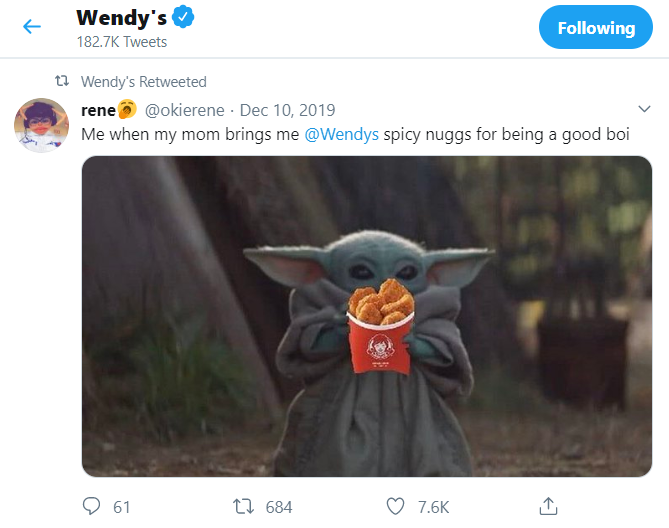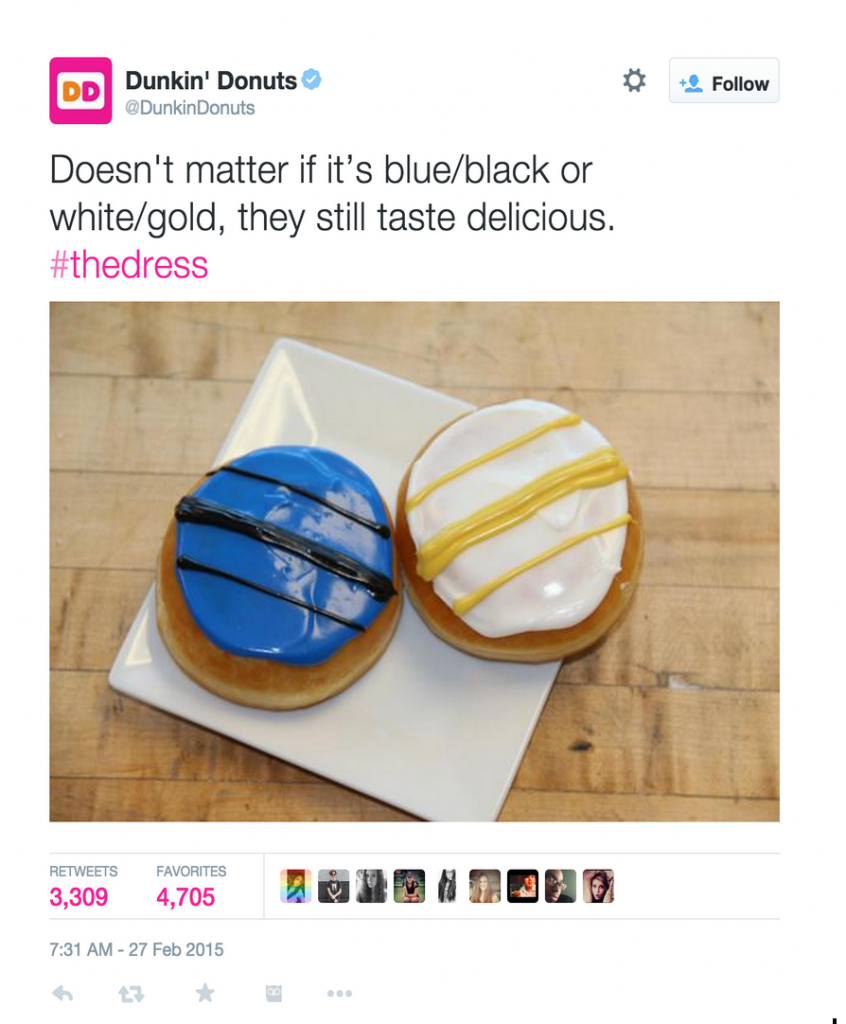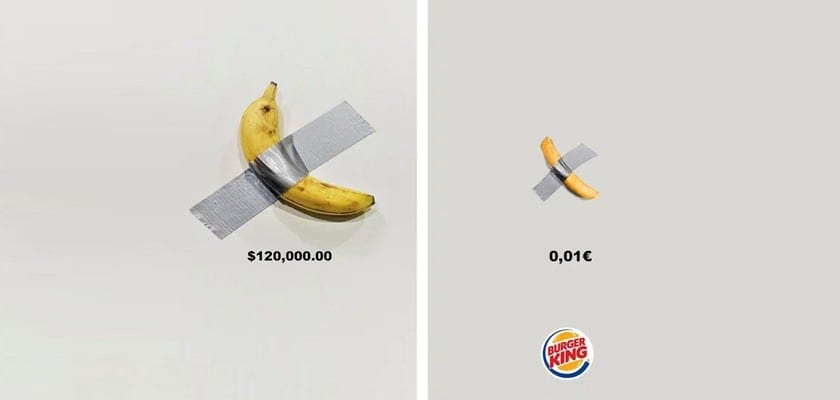Viral marketing spreads rapidly across audiences, expanding from a small initial exposure to widespread reach. People actively seek this type of marketing, unlike an actual virus.
Brands seeking widespread exposure naturally gravitate toward viral marketing to propel their content in front of maximum customers and achieve social media recognition.
Modern marketers must evaluate whether chasing trends delivers sustainable results or if social media serves better as an integrated component of a comprehensive marketing funnel.
The theory of viral marketing and the advantages of viral marketing require re-examination as we approach 2025.
What is viral marketing?
Here’s a quick definition of viral marketing as it relates to products services.
“Viral marketing is a sales technique where information about products or services spreads organically through word mouth marketing at an exponentially increasing rate.”
Viral marketing becomes “viral” when content aimed at promoting products spreads beyond the target audience to the wider population, appearing in diverse social media feeds across demographics.
Viral marketing serves multiple purposes: promoting products services, generating positive user testimonials, and building brand image. The fundamental rule remains making products worth discussing, which naturally encourages sharing among satisfied customers.
While marketing campaigns attempt to trigger virality, predicting viral success remains partially mysterious, which represents one of the disadvantages of viral marketing. Though luck plays a significant role, marketers can implement specific viral marketing strategy to increase viral potential.
How does viral marketing work?
Current social media viral marketing mirrors meme propagation patterns. Though memes may not directly relate to products, their rapid spread demonstrates viral principles, as seen when phenomena like Baby Yoda or “OK boomer” suddenly dominate social feeds.

Memes achieve massive circulation because they establish emotional connections, prompting engagement through likes and shares. Viral content marketing follows identical principles when followers spread brand content they find compelling. Viral campaigns represent concentrated marketing power, though few businesses achieve the universal influence they seek.
How to make your brand go viral?
1. Find the right target audience
Successful viral marketing begins with precise target audience identification. Content becomes viral when reaching people who relate strongly to the message. Develop detailed marketing personas representing target customers before launching viral campaigns.
Marketing personas should include demographics, psychographics, and social media behavior patterns. Understanding audience preferences enables teams to create relatable content with strong sharing potential.
2. Pick the right social media platforms
Presence on major social platforms remains essential for viral marketing success when promoting products or services on various social media platforms. Select platforms based on target audience demographics and behavior. Instagram, Twitter, LinkedIn, and Facebook each provide viable environments for viral campaign launches.
Each platform requires tailored content formats: Instagram demands stories, feed posts, and reels, while Twitter requires concise tweets that match the platform’s communication style.
3. Capture attention fast
Social media users encounter overwhelming content volumes daily, resulting in diminishing attention spans. Posts must capture attention instantly to interrupt scrolling behavior and engage viewers.
Messages must instantly register as bold, funny, wild, or inspiring to gain traction. Adapting to emerging content formats remains essential, with short-form videos on Instagram Reels, TikTok, Facebook Watch, and YouTube Shorts dominating current popularity metrics.
4. Post at the right times
Content reach maximization requires strategic timing. Post when target audiences show peak activity levels on each platform. Optimal posting times vary based on audience demographics, platform algorithms, and user behavior patterns.
5. Appeal to emotions
Emotional response drives viral campaign success. Content generating strong feelings receives higher engagement rates. Memorable social posts typically evoke laughter, tears, nostalgia, or anger. Creating similar emotional impact increases campaign memorability.
Creating Viral Social Media Ad Campaigns
Paid social media campaigns can achieve viral status alongside organic content when strategically designed. The following approaches create viral social media ad campaigns:
1. Design ads that don’t look like ads
Shareable paid content disguises commercial intent by prioritizing value. Create content that entertains, educates, or inspires audiences before introducing product or service promotions.
2. Target precisely, then expand
Target campaigns initially to highly specific audiences receptive to your message. After engagement begins, expand targeting to broader audiences sharing characteristics with early engagers.
3. Test multiple creative variations
Develop multiple ad versions with varying visuals, headlines, and calls to action. Use platform A/B testing capabilities to identify top-performing variations before budget scaling.
4. Optimize for engagement first
Optimize initial campaigns for engagement metrics (comments/shares) rather than conversions. Platform algorithms then identify users with higher engagement probability for your content.
5. Incorporate interactive elements
Leverage platform-specific interactive features: Twitter polls, Instagram stickers, and Facebook playable ads increase engagement metrics and extend time spent with advertisements.
6. Leverage retargeting for continued momentum
Implement retargeting campaigns for users who previously interacted with content. Multiple touchpoints reinforce messages and promote sharing behavior.
7. Monitor and respond in real-time
Dedicate team members to real-time ad performance monitoring and comment engagement. Prompt responses to user interactions boost engagement metrics and algorithm favorability.
8. Scale what works immediately
When ads show viral traction indicators, rapidly increase budget allocation to capitalize on momentum while content remains fresh and engaging.
Paid campaigns require authentic, valuable core messages to achieve virality. Effective viral social media ads complement and amplify organic marketing efforts rather than functioning as replacements.
Viral Content Examples That Made History
Beyond “The Dress” and the duct-taped banana examples, these viral content cases captured global attention through specific success factors:
1. Ice Bucket Challenge
The ALS Ice Bucket Challenge prompted participants to pour ice water over themselves while nominating others to participate or donate. The campaign generated $115 million for ALS research and 17 million videos across platforms by combining participatory fun with meaningful cause support.
2. Spotify Wrapped
Spotify Wrapped provides personalized year-end music statistics that users eagerly share. The campaign succeeds through highly personalized content that generates organic word-of-mouth marketing annually.
3. Dollar Shave Club Launch Video
Dollar Shave Club’s launch video featured the founder delivering a humorous monologue about razor subscriptions, garnering millions of views through authenticity, humor, and direct addressing of customer pain points regarding razor prices.
4. Old Spice “The Man Your Man Could Smell Like”
Old Spice’s campaign showcased Isaiah Mustafa delivering rapid-fire humor while navigating impossible scenarios, becoming instantly popular. The brand extended viral reach by creating personalized video responses to social media comments.
5. LinkedIn’s “Career Advice From Baby Boomers to Gen Z”
LinkedIn’s video series featuring baby boomers giving career advice to Gen Z workers went viral by bridging generational gaps, delivering genuine value, and creating emotional resonance.
6. Blendtec’s “Will It Blend?”
Blendtec’s video series showed their founder blending unusual items including iPhones and marbles. The campaign achieved virality by demonstrating product quality through entertaining, unexpected demonstrations that created anticipation for future episodes.
These viral content examples succeeded by combining emotional appeal, uniqueness, simplicity, relevance, and effective calls to action that promoted sharing behavior.
Viral Marketing Ideas Worth Trying
These actionable viral marketing concepts have demonstrated success and remain viable for implementation:
Interactive Quizzes and Assessments
Develop industry-related personality quizzes or assessments generating shareable results. Fitness brands can create “What’s Your Workout Personality?” quizzes that users share across social platforms.
Challenges with Branded Hashtags
Create participation challenges incorporating branded hashtags. Challenges should balance accessibility for wide participation with uniqueness that distinguishes them from competitors.
Behind-the-Scenes Content
Share authentic behind-the-scenes content showing product development, office culture, or team member daily activities to humanize brand perception.
User-Generated Content Campaigns
Motivate customers to create product-featuring content by offering official page features or prizes for creative submissions.
Reaction Videos
Record videos capturing authentic reactions from first-time users, focus groups, or team members experiencing products, highlighting genuine emotional responses.
Collaborative Content with Complementary Brands
Form partnerships with complementary brands sharing your target audience to create collaborative content both companies promote to their respective followers.
Social Media Takeovers
Permit influencers or customers to manage social media accounts temporarily, introducing fresh perspectives and exposing your brand to their follower networks.
Newsjacking with a Creative Twist
Apply brand-specific perspectives to trending news events, following Oreo’s model with their Super Bowl blackout “Dunk in the Dark” tweet that captured audience attention.
Apply these viral marketing approaches while maintaining brand voice consistency and core values, customizing each concept for specific audience resonance.
How to Make Viral Content: A Step-by-Step Approach
Creating viral content requires methodical planning and execution through these sequential steps:
1. Research trending topics and formats
Research current industry and social media trends before content creation. Google Trends, BuzzSumo, and platform trending pages identify popular topics and effective content formats.
2. Identify emotional triggers for your audience
Select target emotions for content to evoke. Content triggering high-arousal emotions (awe, amusement, excitement, anger) generates more shares than content evoking low-arousal emotional responses.
3. Craft a compelling headline or hook
Content must capture immediate attention. Craft headlines creating curiosity, promising value, or challenging beliefs. Videos require compelling first 3-5 seconds to retain viewer interest.
4. Focus on visual appeal and quality
Viral content demands high-quality visuals. Invest in professional photography, graphic design, and video production to ensure visual appeal even in simple content.
5. Keep it simple and focused
Viral content communicates single clear messages. Avoid multiple competing ideas that confuse audiences or dilute main points.
6. Make it easily shareable
Eliminate sharing barriers through mobile optimization, manageable file sizes, and prominent share buttons. Consider cross-platform appearance when content gets shared.
7. Add a unique perspective or twist
Differentiate content through brand-specific perspectives or unexpected twists that make material memorable and shareworthy.
8. Include a call to action
Guide your audience on what to do next by including clear calls to action like “Share if you agree,” “Tag someone who needs to see this,” or “Try this and show us your results.”
9. Time your release strategically
Time content release when target audiences show peak online activity. Consider weekday, time of day, current events, and seasonal factors affecting content relevance.
10. Seed your content strategically
Seed content with key influencers and communities who provide initial traction before organic viral spread occurs.
While virality remains unpredictable, these steps substantially increase the probability of creating resonant content that achieves widespread distribution.
Viral Marketing Tools
You can use a social media scheduling tool like RecurPost to automatically publish your posts at the right time. Other specialized viral marketing tools that can help your campaign gain traction include:
Content Research and Trend Analysis
BuzzSumo allows marketers to discover trending content across social platforms, analyze what competitors’ content performs best, and identify influential sharers within specific niches. The platform provides detailed metrics on content performance and helps identify optimal formats for viral potential.
Visual Content Creation
Canva offers templates specifically designed for social media virality with pre-sized formats for each platform. The tool provides access to thousands of elements that align with current design trends, making professional-looking visuals accessible even without graphic design experience.
Social Media Management
RecurPost enables cross-platform content scheduling and analytics tracking to measure performance across multiple networks simultaneously. The platform’s smart scheduling features determine optimal posting times based on when your audience shows highest engagement levels.
Brand Monitoring
Mention tracks conversations about your brand across social media, blogs, forums, and news sites. The tool sends real-time alerts when your content begins gaining traction, allowing immediate engagement with users sharing your material to amplify reach.
Video Optimization
TubeBuddy specializes in YouTube optimization with features for keyword research, tag suggestions, and thumbnail A/B testing. The platform helps identify trending topics within your niche and optimizes video elements for maximum discovery and sharing potential.
Analytics and Measurement
Google Analytics and platform-specific insights tools measure traffic sources, engagement metrics, and conversion rates from viral content. These analytics help quantify campaign ROI and refine your future viral marketing strategy based on performance data.
Viral Marketing Strategies that Work
Viral marketing has evolved significantly over the past decade as marketers tested various approaches that occasionally achieved extraordinary results.
Brands create lasting impressions through humor and emotional impact that resonates with audiences long-term.
A notable viral phenomenon occurred when Scottish singer Caitlin McNeill posted a dress photo on Tumblr, asking whether it appeared blue/black or white/gold, sparking widespread debate.

Popular brands leveraged this viral post by contributing their perspectives, generating substantial retweets and shares that increased audience engagement.

An example of a viral marketing campaign in recent times was the ‘duct-taped banana trend’. The taped banana was secured to a wall with a single piece of duct tape. It began garnering attention after it debuted at the Miami art exhibition Art Basel as part of an installation dubbed “Comedian” that was created by artist Maurizio Cattelan.

A lot of brands in the world caught on to this viral trend and garnered attention. Burger King is known for its active social media for business presence and quirky posts.
Working with Viral Marketing Services
While many brands develop in-house viral marketing capabilities, specialized agencies and services offer expertise and resources that can significantly increase viral campaign success rates.
Types of Viral Marketing Services
Viral marketing services generally fall into several categories:
Content Creation Agencies specialize in developing highly shareable content formats optimized for specific platforms and audiences. These agencies employ creative teams experienced in producing content with proven viral potential.
Influencer Marketing Platforms connect brands with content creators who have established audiences and proven ability to generate engagement. These services handle influencer identification, negotiation, and campaign management.
Viral Campaign Management firms offer end-to-end services from strategy development through execution and measurement. These agencies typically maintain specialized teams for each aspect of viral marketing.
Social Listening and Amplification services monitor online conversations to identify viral opportunities and amplify content showing early signs of traction through strategic promotion.
Selecting the Right Viral Marketing Partner
When evaluating potential viral marketing services, consider these factors:
- Track Record: Review their portfolio of successful viral campaigns, particularly within your industry or with similar target audiences.
- Platform Expertise: Ensure they demonstrate specialized knowledge of the platforms most relevant to your target audience.
- Measurement Approach: Verify they employ robust analytics to track campaign performance beyond vanity metrics.
- Creative Alignment: Assess whether their creative approach aligns with your brand voice and values.
- Distribution Strategy: Evaluate their methods for initial content seeding and amplification.
Frequently Asked Questions
1. What is viral marketing in digital marketing? How does it work?
Viral marketing is a strategy where people are encouraged to share and spread information about a brand’s products or services online – mostly on social media platforms. The magic of viral marketing lies in its ability to make content spread like wildfire. The best part is that any piece of content goes viral just because people like it so much that they share it with their audience.
Behind the scenes, extensive work is needed since only 1% of content ends up going viral. You need to incorporate opinions and emotion into the content creation process. The more people relate to what you have to say, the more are the chances of your content going viral. A viral campaign focuses on generating positive emotions such as surprise or joy. You can also collaborate with some influencers to help share your content 3 times more. Share it on multiple social media platforms multiple times to reach as many people as possible! Make use of different formats like feed posts, stories, reels, tweets, etc.
2. What are the types of viral marketing?
There are basically 5 Viral campaign types:
1. Emotional viral marketing: Trigger something emotional like joy, anger, laughter, or tears.
2. Incentivized viral marketing: Run a contest or giveaway and reward people to share your campaign.
3. Engineered viral marketing: It is a marketing campaign that is engineered intentionally to go viral.
4. Pass-along viral marketing: It is when one user passes the content to others and it forms a chain.
5. Buzz viral marketing: A buzz is created intentionally through ads or messages to grab the attention of people.
3. How do I make my brand viral?
Follow the below simple steps to make your brand go viral:
1. Be attentive to people’s emotions as they play a key role in making any campaign viral.
2. Make creative ads, not conventional ones.
3. Be good at storytelling as it evokes an emotional response in the viewers.
4. Don’t just create one campaign and stop. Keep your audience engaged with multiple campaigns.
5. Make sure that the campaign is easily shareable.
4. How to go viral on social media?
Viral marketing campaigns require persistence and groundwork alongside luck. To boost your chances of going viral, take care of the following:
– Post your campaign on multiple social media platforms more than once.
– Make your content relatable and relevant.
– Be more authentic – Elicit emotions, tell stories, discuss ideas.
– Make your campaign reach the right audience through ads or influencer marketing.
– Run a contest or giveaway.
5. How to make things viral?
To make your content go viral online, consider the below tips:
– Incorporate current newsworthy trends into your viral content.
– Focus more on creating video content.
– Make use of relevant keywords and hashtags.
– Collaborate with multiple influencers.
– Launch a fun contest.
– Incorporate humor in your content.
– Dare to be shocking and controversial.
6. How to create a viral marketing campaign?
Creating a viral marketing campaign involves these key steps:
– Understand your target audience and what they like.
– Make content that people want to share and enjoy.
– Share your content on social media and encourage others to do the same.
– Work with popular people or influencers to promote your campaign.
– Use humor or emotions to make your content memorable.
– Release your campaign at the right time to catch people’s attention.
7. How to make a social media campaign go viral ?
To make a social media campaign go viral:
– Post at right time.
– know your audience.
– Post on right social media platform.
– Create compelling and shareable content.
– Collaborate with right influencers.
– Use hashtags and trends relevant to your campaign.
8. What are some of the viral marketing examples ?
Here are some popular examples of viral marketing campaigns;
1. Oreo’s “Dunk in the Dark”: During a power outage at the Super Bowl, Oreo tweeted a simple message, “You can still dunk in the dark,” gaining widespread attention and praise for its quick-witted response.
2. Nike’s “Just Do It”: Nike’s iconic slogan and powerful advertising campaigns have become synonymous with inspiration and motivation. Their ads often go viral due to their emotional appeal and featuring famous athletes.
3. Wendy’s Twitter Roasts: Wendy’s fast-food chain became known for its witty and humorous responses to followers’ tweets, leading to viral interactions and increased engagement.
9. What are some of the viral branding examples ?
Here are some well-known viral branding examples:
1. Apple: Apple’s simple and sleek branding, combined with their innovative products, has led to a massive following and viral marketing through word-of-mouth.
2. Coca-Cola’s “Share a Coke”: Coca-Cola replaced their logo with popular names on their bottles and cans, encouraging people to share personalized drinks on social media, making it a viral sensation.
3. IKEA’s “The IKEA Effect”: IKEA’s clever marketing of DIY furniture assembly, emphasizing the joy and accomplishment of building your furniture, resonated with customers and went viral.
4. Spotify’s “Year in Review”: Spotify’s personalized year-end music reviews, summarizing users’ listening habits, became a viral trend on social media.
10. What are some of the viral content examples ?
Here are some well-known examples of viral content/post:
1. “Gangnam Style” – Psy’s music video with catchy dance moves that became a global sensation on YouTube.
2. “Baby Shark Dance” – A children’s song with an addictive tune and simple dance moves that became a viral hit among kids and families.
3. “The Dress” – A photo of a dress with an optical illusion, causing debates and discussions on its true colors, becoming a viral sensation.
4. “Kiki Challenge” – A challenge where people danced alongside moving cars to Drake’s song “In My Feelings,” taking social media by storm.
5. “Salt Bae” – A video of a Turkish chef sprinkling salt in a unique style, leading to numerous parodies and imitations online.
6. “Distracted Boyfriend” – A stock photo depicting a man turning to look at another woman while his girlfriend looks on disapprovingly, widely used in memes and jokes.
11. What does viral marketing production involve?
Viral marketing production involves creating content that is emotional, unique, and shareable. Use humor and authenticity, collaborate with influencers, and engage the audience on social media. Timing, promotion, and analyzing results are vital for success.
12. How do companies increase the likelihood that their videos will go viral?
To increase the likelihood of videos going viral, companies can:
1. Emotional Content: Make videos that touch people’s hearts or make them feel something.
2. Uniqueness: Create videos that stand out and are different from the norm.
3. Humor: Use funny elements to make the video entertaining and shareable.
4. Influencers: Collaborate with famous or popular people who can promote your video to their followers.
5. Engage Audience: Interact with your audience, ask them to share the video, and respond to their comments.
6. Authenticity: Use real people or genuine stories to connect with viewers.
7. Promotion: Share the video on social media and other platforms to reach a wider audience.
8. Mobile-friendly: Ensure the video looks good and plays well on mobile devices.
13. How to make your clothing brand go viral ?
To make your clothing brand go viral:
1. Unique Brand Identity: Create a distinct and memorable brand identity that sets you apart from competitors.
2. High-Quality Products: Offer well-designed and quality clothing that customers will love and recommend.
3. Social Media Presence: Be active on social media platforms and post engaging content regularly.
4. Influencer Partnerships: Collaborate with influencers or brand advocates to reach a larger audience.
5. User-Generated Content: Encourage customers to share photos wearing your clothes and repost their content.
6. Contests and Giveaways: Run fun and exciting contests or giveaways to boost engagement and attract new customers.
7. Limited Editions and Drops: Create a sense of urgency by offering limited edition items or periodic product drops.
8. Embrace Trends: Stay up-to-date with fashion trends and incorporate them into your designs.
9. Customer Engagement: Interact with your audience, respond to comments, and make them feel valued.
10. Word-of-Mouth: Provide an exceptional customer experience to encourage word-of-mouth referrals.

Debbie Moran is a Digital marketing strategist with 5+ years of experience producing advertising for brands and helping leaders showcase their brand to the correct audience. She has been a part of RecurPost since 2019 and handles all the activities required to grow our brand’s online presence.
